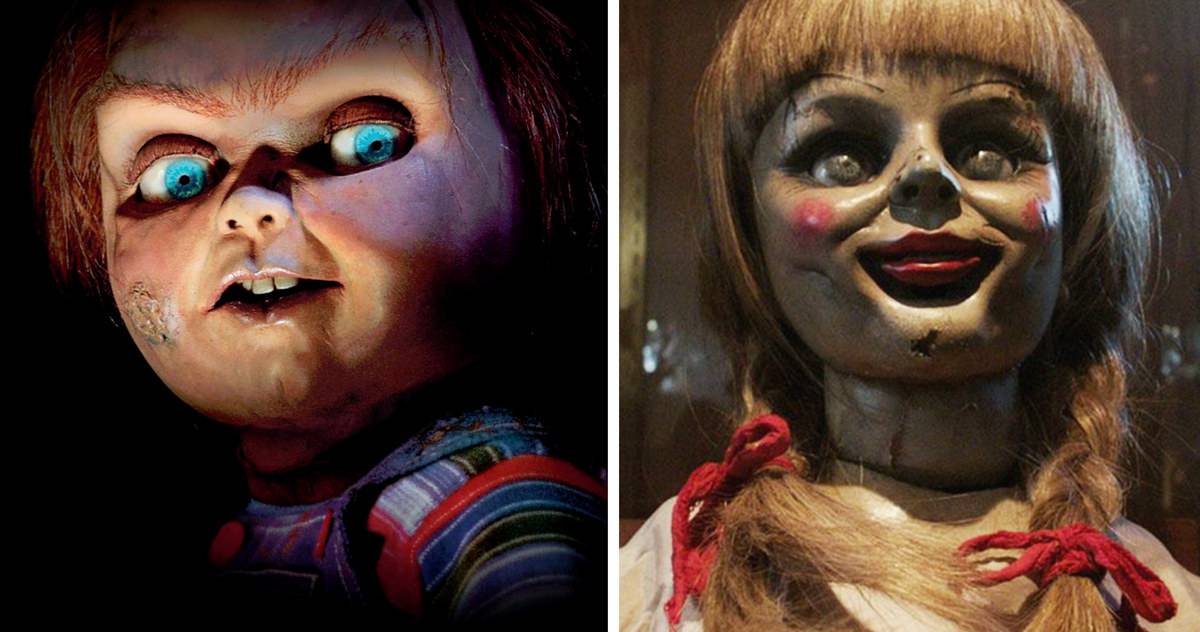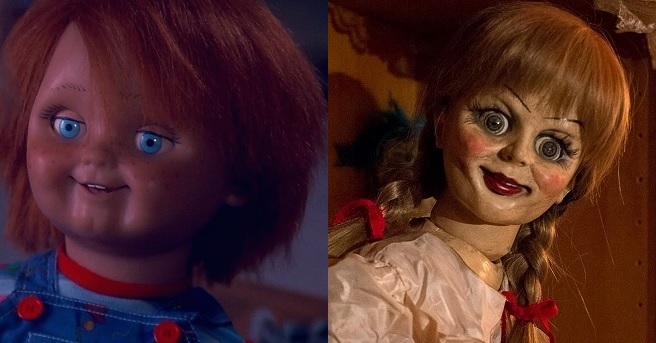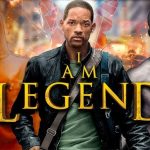“Chucky vs. Annabelle (2025)” — When Evil Finds Its Reflection

There are horror films that make you jump — and then there are those that make you listen. “Chucky vs. Annabelle” belongs to the latter. It whispers. It hums. It crawls under your skin not through shock, but through the slow realization that the inanimate might just be listening back.

Set in the mist-laden streets of New Orleans, the story opens with a break-in — an act of greed that fractures a vault of cursed relics. Within lies Chucky, the grinning ghost of violence, and Annabelle, a vessel of ritual and wrath. When their spirits awaken, it’s not chaos that erupts, but calculation. The film understands one chilling truth: evil doesn’t always scream; sometimes, it waits.
Brad Dourif’s return as the voice of Chucky is a performance that feels both nostalgic and newly terrifying. His voice trembles with manic joy — every line dripping with irony and bloodlust. Opposite him, Annabelle Wallis portrays a young psychic whose sanity becomes the battlefield. Her descent from skepticism to terror feels painfully human, grounding the supernatural in trembling flesh.

Then enters Vera Farmiga as Lorraine Warren — not the fearless investigator we remember, but a woman haunted by faith. Her eyes carry years of silence, as though every prayer she’s uttered came back unanswered. In this world, belief isn’t salvation — it’s surrender.
James Wan’s direction turns every shadow into a question mark. His mastery of sound and silence creates a rhythm of fear — the kind that builds until you forget to breathe. The flicker of candlelight feels almost alive, and every creak in the floorboards sounds like a secret. It’s gothic terror, reimagined for a world that no longer believes in holy water.
The cinematography drenches the film in contradiction — beauty and decay coexist in every frame. Blood glistens like paint, and the dolls’ faces, cracked and gleaming, resemble something almost divine. The contrast of light and shadow mirrors the duel between chaos and control, love and possession.

But what makes “Chucky vs. Annabelle” transcendent is its refusal to be just a monster mash. The film asks what happens when evil meets its reflection — when rage confronts ritual. Their conflict isn’t for power, but for purpose. Both dolls seek something neither can possess: the soul’s permanence.
The script teases morality without offering comfort. It suggests that faith, science, and madness are just different languages for the same plea — to be seen by something beyond ourselves. In one haunting exchange, Lorraine murmurs, “They don’t want freedom. They want memory.” And perhaps that’s the film’s quiet revelation: monsters only exist because we keep remembering them.
As the climax unfolds in fire and smoke, the imagery is almost biblical. Two dolls facing each other, their painted eyes reflecting the inferno, while unseen hands twist the air around them. The walls weep. The mirrors shatter. And in the heart of the blaze, their shadows keep moving — as if refusing to die.

When the last embers fade and a child’s laughter echoes — “Wanna play again?” — the audience isn’t just left frightened. They’re left complicit. The film has made them part of its ritual, turning the cinema into another cursed room, another vault waiting to be reopened.
“Chucky vs. Annabelle” isn’t merely a crossover. It’s a requiem — for faith, for innocence, for every toy we once thought loved us back. It’s horror redefined: elegant, existential, and utterly unforgettable.
Related movies:











